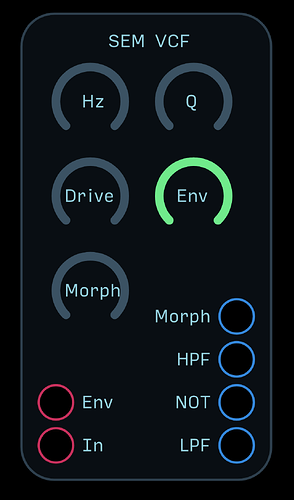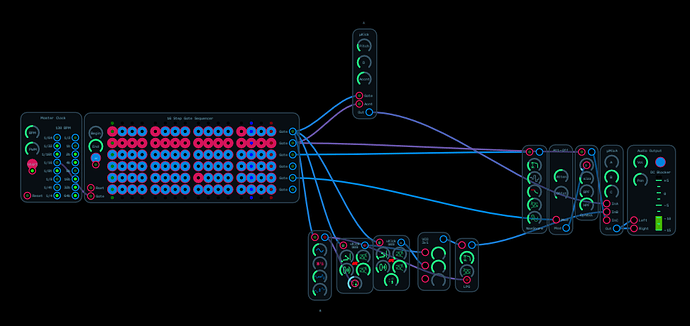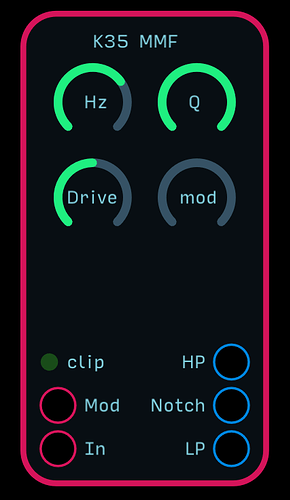wow thank you, this looks awesome. gonna mess with it now. the list of ideas for patches i want to try out is absurd at this point. i’ve started keeping a sort of “patch idea diary”. audulus rules
I’m about to wrap up the first edition of the reface library. If there are any last minute additions you want to see in the library, post them here!
Does anyone know of an easy way to bring the reface into the iPad version? Right now, I need to go to “iCloud Drive” to go into the Files selection screen to select items from the reface. I’ve happily worked with this since the new modules are really nice, but if there’s an easier method, that would be really awesome.
Thanks!
Thats the easiest way right now - in Audulus 4 we’re going to add a way to put your own custom modules into the main directory but iCloud is closest you can get for now
You can also use dropbox, which is what I do.
Added a couple more modules - Audulus 3 Library WIP v0.0.12.zip (655.6 KB)
This is a CV Mixer that autolevels based on @robertsyrett’s VCO mixer.
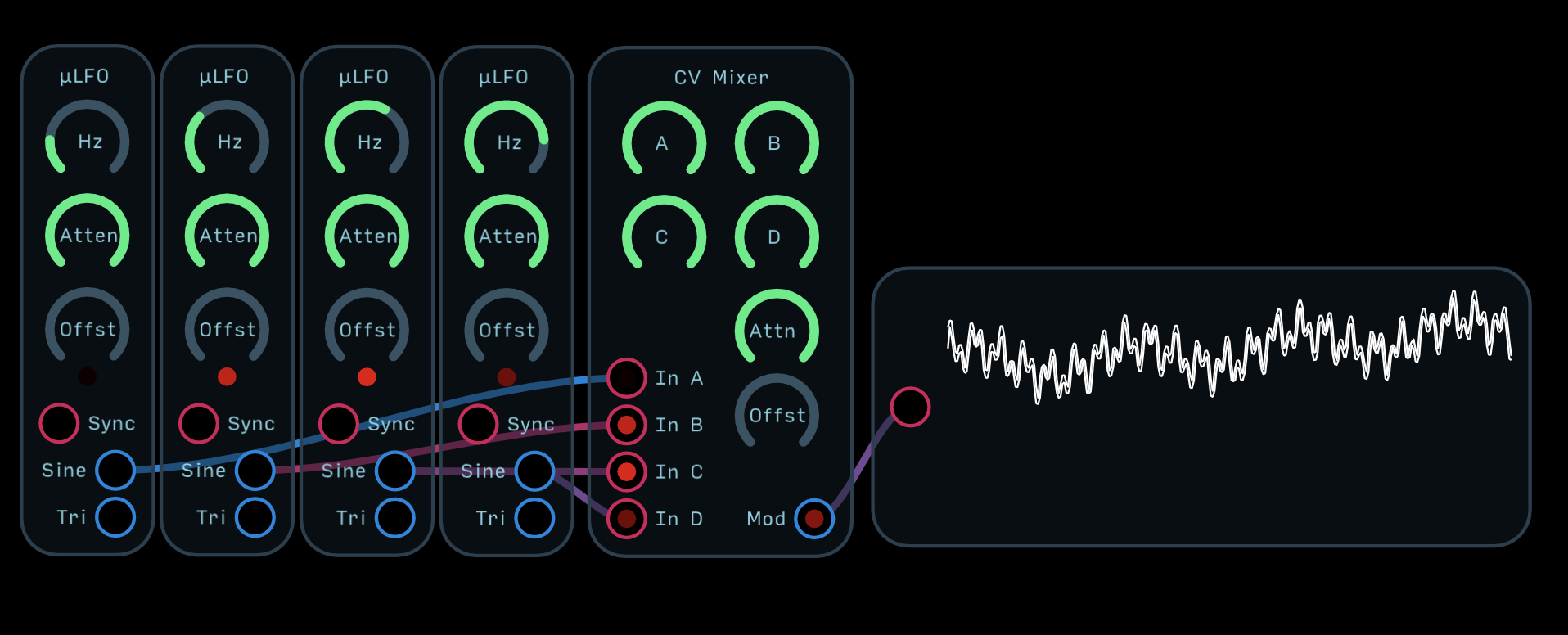
CV Mixer Demo.audulus (59.5 KB)
Also included is a nice minimal 8 channel mixer that has an enveloped mute so it doesn’t click.
8 Channel Mixer.audulus (55.0 KB)
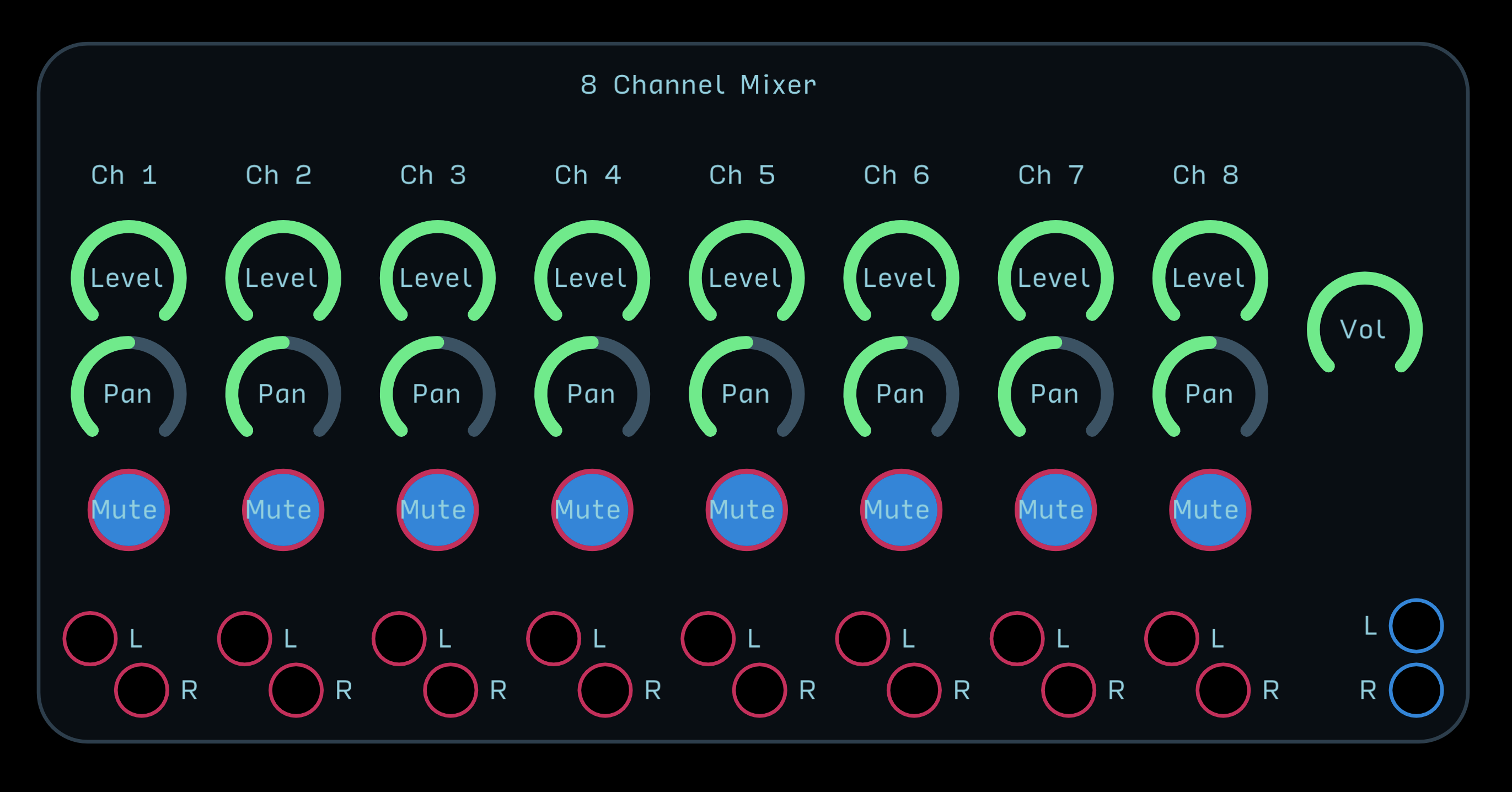
I’m blanking on how to get the BP output of a filter. It would be nice to be able to morph like with this filter, but be able to morph into BPF as well.
SEM VCF.audulus (23.5 KB)
I was just doing an A/B on the uKick vs. the doubled 909 setup I usually use. There seems to be some punch on the uKick that is distinct. At the same time I really like the versatility of the 909 cluster.
Kick AvB.audulus (879.5 KB)
The cluster may also be slightly less CPU heavy. Wonering if maybe the cluster should be its own module; some sort of stacked package, the wavefolded LFO seems quite useful for adjusting pitch after a strike.
The original signal - the notch should give you a bandpass I think
I went back and looked at the sansnom model and tapped the same spots he did for the BP and HP, which means you can you can simplify a lot at the output section. No need to make HP twice or morf three ways, a simple crossfade from LP to HP will create a notch .
SEM VCF with bandpass.audulus (21.3 KB)
edit: I also changed env to mod since it could be any modulation going to the filter (which is designed not to close) and added the clipping indicator back in for fun.
@robertsyrett or @sansnom - either of you know how to make a HPF-NOT-LPF out of the korg filter? I too am looking at the old thread and see two separate models there for HP and LP but thinking there’s just tapped in different ways.
Korg35 MMF.audulus (35.5 KB)
Here you go.
The HP and LP filters @SansNom made are actually pretty different inside in respects to where the diode clipper is (which gives it both it’s character) in the signal path. This is an interpretation of the Korg 35 LP which has been modified to close fully as a high pass and still sound resonant as a notch. Drive has been added, like with the other adaptations, but with a very moderate index as the distortion has a definite sweet spot.
Thanks! I think if thats the case we can actually make it a dual filter like it is on the MS20 so you can chain lpf into hpf. I’ll make it bigger so it can have inputs for both.
The downside of a dual filter is that it will take up quite a bit of CPU. But I suppose that isn’t the end of the world.
Yeah but it’s definitely a cool thing on that filter - helps clean up muddy low end if you just use HPF like an EQ
For muddy low end I generally like a biquad filter, or even the DSP node. The MS-20 HP filter is (and I’m sure you are probably aware of this) actually fantastic for ADDING low end as the resonance could really be pushed to unreasonable levels.
It’s a pretty awesome filter regardless, so I’m glad it will make it in the library.
I would like to see more dual/stereo modules (not as replacements but in addition). I realize that because it is digital you can just copy and paste the algorithms, but for various modules there are a number of simple considerations that will make obvious sense when you understand the module from the ground up, that won’t be obvious for end users who do not program. I imagine that there are also some effective techniques for sharing the computations in certain sections where there is no need to have any variation between the two signal paths.
I’m making a pair of modules that will basically be a stereo in/out pair you can put around a “mono” module to make it easier to stereoize signals. In Audulus 4 I think we’ll digure out a way to handle this more elegantly.
